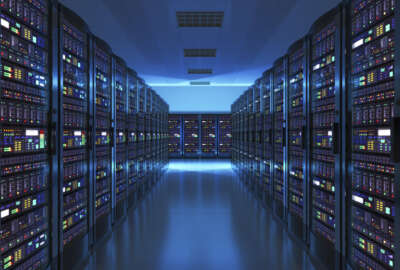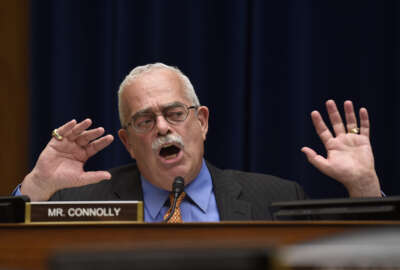
Before moving to the cloud, optimize your network
Two feds who have experience moving to the cloud offered up lessons learned from their experience, including the one thing that makes all the difference.
Agencies planning to move from legacy systems to the cloud need to pay attention to their network, said two veterans of the transition.
Tony Summerlin, senior advisor to the chief information officer at the Federal Communications Commission, said if there was one thing he could do over again, it would be to address his network’s infrastructure ahead of time, in order to be better prepared for the transition.
“As we moved our data centers, one of the things I severely underestimated was the need for a totally redesigned network approach,” he said during an Aug. 4 FedScoop webinar. “Because everything started living in the network as opposed to living in our data center, and so all the tools and references you were used to using with a network that you fully controlled and both ends of that network all of the sudden disappeared.”
He listed several issues with the limitations of his network that he only discovered after the fact:
- The bandwidth was inefficient, especially when it came to backhaul issues.
- He was unable to utilize familiar security practices.
- His network visibility was lacking.
- Bandwidth issues began disrupting user experience.
- Software survival became a concern.
“So the network architecture needed to be flexible,” Summerlin said. “And services needed to be independent of any location.”
Bring Your Own Device (BYOD) and telework policies also meant that the FCC’s network had to be available in places it never would have before. Eventually, he came to believe that the network needed to be outsourced, although that hasn’t happened yet.
“Networks have moved from being tactical to highly strategic,” Summerlin said. “Networks are where the business fails or runs.”
That’s why security also is a challenge, he said. Agencies need to control traffic in the network, which is more difficult because of mobile devices and remote desktops. Traffic now is server-to-server, with endpoints that are independent of location.
“Your network can and should be the conduit to reliability, security and compliance in the cloud, or you can let it be the roadblock of all three,” Summerlin said.
Richard McKinney, CIO of the Department of Transportation, found it necessary to do exactly what Summerlin recommended when he began to transfer his systems over to the cloud. DoT’s network grew organically out of around 10 different instances over the last 20 years, he said, leaving a complicated mess to figure out.
So he hired a company to do an assessment and blueprint of DoT’s network. The company is mapping the traffic, the connections and the devices. It’s determining patch levels. And it’s pinpointing potential problems before they develop.
“Where are the bottlenecks?” McKinney asked. “Where are we going to have potential problems with end users out in the field, if we move the service to the cloud?”
McKinney said it was important to think far ahead in undertaking a task like this in order to minimize creating new problems in the future.
“We wanted to begin with the end in mind,” he said. “As we modernize, as we take more of an enterprise approach, we’re trying to assess what those mission needs are and how that’s going to change in the coming years so we can design a network that not only meets our needs today, but meets our needs for the foreseeable future.”
Taking these precautions, and taking the long view, has enabled him to make changes to his network that will facilitate the transition. He’s rerouted the way traffic flows between offices, and restructured the network to be more elastic, meaning it can handle sudden spikes in activity without losing speed.
After making those changes, he was able to begin transitioning his system to the cloud, starting with his mail and messaging system, which consisted of around 400 terabytes of data.
“Because we spent some time focusing on the network and the role the network was going to play in making that cloud experience a good one for the user,” he said. “I can say that thus far we’ve been hearing from the users that the throughput and the experience they’ve been having with the cloud is really identical to the experience they were having with our on premise exchange environment. We consider that to be a huge success. “
“If the users don’t like the cloud service, you haven’t done yourself any good,” he added.
Copyright © 2025 Federal News Network. All rights reserved. This website is not intended for users located within the European Economic Area.
Daisy Thornton is Federal News Network’s digital managing editor. In addition to her editing responsibilities, she covers federal management, workforce and technology issues. She is also the commentary editor; email her your letters to the editor and pitches for contributed bylines.
Follow @dthorntonWFED





